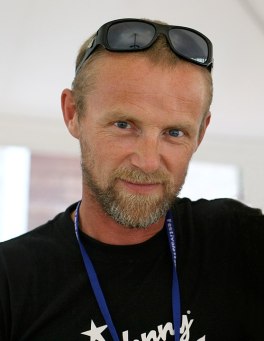
Last week was time off for family business, but if you’ve ever dealt much with the health care “system,” you’ll understand my advice to myself, “take a book.” There’s always so much time sitting around, waiting, and waiting again, that something engaging to capture at least part of your attention is welcome. You don’t forget why you’re there, of course, you just give the extraneous sights and sounds some competition.
The book I clung to was Man Booker award-winner and Syracuse U. professor George Saunders’s A Swim in a Pond in the Rain. It’s one that works for writers who want to put more into their writing and readers who want to get more out of their reading. Saunders takes seven stories from four Russian short story masters (Chekhov, Turgenev, Tolstoy, and Gogol) and breaks them down to consider why they work. This isn’t one of those craft books that debates character-driven versus plot-driven or the usual ways stories are analyzed. Instead, Saunders talks about how the stories create the effects they have on readers. So much I wasn’t noticing!
Here’s a small example. One of the stories is Tolstoy’s “Master and Man,” which in (very) short is about an arrogant merchant, Vasili, who, with his servant, drives out in a horse-drawn sledge on an errand on a blizzardy day. The master doesn’t listen to the servant’s advice about route and gets them lost; they arrive at a small village, twice, because they are driving in circles; but the master refuses to stay the night; they become lost again; and I won’t tell you the rest, in case you want to read it yourself.
Saunders says that in his work with talented young writers, two factors separate the writers who go on to publish their work and those who don’t: a willingness to revise and “the extent to which the writer has learned to make causality.” In the Tolstoy story, because of the kind of person he is, Vasili doesn’t listen to his servant’s advice and gets them lost, because he won’t stop or stay at the village, they are lost repeatedly.
Saunders says, “For most of us [writers] the problem is not in making things happen,” but “in making one thing seem to cause the next.” Why is this important? “Because causation is what creates the appearance of meaning;” it’s what makes them work.
Another gem from this same story is Tolstoy’s laundry. Outside the little village of Grishkino is a cottage with a clothesline, which Vasili and Nikita pass four times in their lostness. Each time Tolstoy describes the articles hanging there slightly differently, the wind-blown shirts waving and flapping their sleeves in increasingly desperate fashion. On their last pass, the laundry is gone. Tolstoy doesn’t make the mistake of explaining the symbolism, he just plants it in the reader’s mind to let it grow in significance. Those little repeats, barely more than a sentence each, escalate the story’s tension, even if a reader notices them only subliminally.
Try it!: A Swim in a Pond in the Rain, by George Saunders. And read Donald Maass’s blog this week on “Effect and Cause.”






















